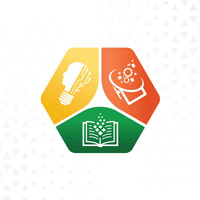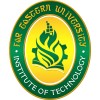Seminars and Trainings

Attendee
AI in the Workplace: Practical Applications for Educators and Associates to Improve Teaching and School Management
Awarded by Educational Innovation and Technology Hub on August 14, 2024
View Credential
Attendee
Review of Complex Engineering Problems
Awarded by FEU Tech College of Engineering on August 12, 2024
View Credential
Attendee
Data Privacy Act Awareness Seminar
Awarded by FEU Tech Human Resources Office on August 07, 2024
View Credential
Attendee
Enhancing Physical and Mental Resilience in the Workplace
Awarded by FEU Tech Human Resources Office on August 05, 2024
View Credential
Attendee
Nanolearning: Bite-Sized Content as the Next Big Trend in Contemporary Education
Awarded by Educational Innovation and Technology Hub on December 12, 2023
View CredentialResearch Publications
Conference Paper · DOI: 10.1109/HNICEM60674.2023.10589057
Deep Learning-Based Automatic Music Transcription of the Diwdiw-as, a Native Filipino Bamboo Flute
2023 IEEE 15th International Conference on Humanoid, Nanotechnology, Information Technology, Communication and Control, Environment, and Management, HNICEM 2023, 2023
![]() Pocholo James M. Loresco
Pocholo James M. Loresco
![]() Alzaga M.E.D.
Alzaga M.E.D.
![]() Eyoyo C.H.
Eyoyo C.H.
![]() Mame E.J.
Mame E.J.
![]() Pena M.R.
Pena M.R.
![]() Toso R.C.C.
Toso R.C.C.
The transcription of music is essential since it preserves the originality of the music and the compositional technique used by the composers. In this manner, native music can be reproduced, and documents of certain tunes can be passed on to succeeding generations without hearing the original music. A very limited amount of research has been conducted on the application of automation in music transcription using deep learning, particularly in native music instruments. This research is an effort to preserve and conserve Filipino culture in the context of native music and musical instruments particularly the Diwdiw-as, a native Filipino bamboo flute. Using signal processing and deep neural networks, the proposed study aims to automate music transcription. The system is capable of classifying pitches based on the fundamental frequency and is also capable of classifying notes based on their duration. Diwdiw-as pitch can be transcribable to the music sheet using the following pitches: CS, DS, ES, FS, GS, AS, BS, C6, while the note values are whole, eighth, quarter, half, dotted eighth, dotted half, dotted quarter. A web-based application has been developed to assist in the automatic music transcription (AMT) of Diwdiw-as. A pdf file of the transcribed music sheet can then be downloaded. According to the confusion matrices, the system's accuracy is high in terms of the transcription of pitches and notes in the music sheet.
Conference Paper · DOI: 10.1109/HNICEM60674.2023.10589022
Comparative Assessment of Off-shore Wind Converters and Wave Energy Converters in the Philippines
2023 IEEE 15th International Conference on Humanoid, Nanotechnology, Information Technology, Communication and Control, Environment, and Management, HNICEM 2023, 2023
![]() Alquiza L.K.P.
Alquiza L.K.P.
![]() Recto K.H.A.
Recto K.H.A.
![]() Pocholo James M. Loresco
Pocholo James M. Loresco
![]() Villalobos J.
Villalobos J.
The Republic of the Philippines is confronted with rebuilding its energy landscape, which now depends heavily on imported fossil fuels for a substantial supply. The Department of Energy (DOE) has established lofty objectives to enhance the nation's renewable energy (RE) capability; nevertheless, these objectives are still to be achieved. This research supports DOE's goals by studying other possible renewable energy sources. In particular, the primary aim of this research is to examine the viability of Offshore Wind Converters (OWCs) and Wave Energy Converters (WECs) as viable sustainable energy options for the Philippines. Ocean wave converters (OWCs) provide inherent benefits in terms of dependability and have widespread societal acceptance. Conversely, wave energy converters (WECs) harness the vast energy potential contained within ocean waves. A comparative evaluation was undertaken to analyze the differences between these two potential renewable energy sources. The assessment concludes that OWCs possess a minor advantage over WECs regarding their economic viability and higher societal acceptability. It recommended that the government adopts a diversified energy portfolio, which may include the incorporation of WECs to effectively navigate the changing dynamics of the energy sector, enhance sustainability, and ensure the long-term security of the nation's energy supply.
Conference Paper · DOI: 10.1109/HNICEM60674.2023.10589034
Identifying Rust Infection and Estimating Severity on Coffee Leaves Using Vision-Based ANN-KNN- Thresholding Methods
2023 IEEE 15th International Conference on Humanoid, Nanotechnology, Information Technology, Communication and Control, Environment, and Management, HNICEM 2023, 2023
![]() Pocholo James M. Loresco
Pocholo James M. Loresco
![]() Meimban R.J.
Meimban R.J.
![]() Aseo A.
Aseo A.
![]() Aniez R.
Aniez R.
![]() Furiscal N.
Furiscal N.
![]() Jugueta E.J.
Jugueta E.J.
The coffee rust disease threatens coffee production in the Philippines with widespread defoliation and reduced yield. Identifying rust infection and its severity is critical for implementing effective mitigation strategies. As an alternative to recent methods that rely on deep learning approaches, our vision-based approach utilizes Artificial Neural Networks, K-Nearest Neighbors, and Thresholding methods to identify rust infection on coffee leaves and estimate severity, providing a computationally lightweight alternative for agricultural disease management. Twenty-four (24) color and texture features of a collected dataset of coffee leaf images were extracted as inputs for an ANN classifier. The percentage of damage on coffee leaves was determined by comparing the damaged pixels to the total area of the leaf using KNN and thresholding segmentation techniques. Through the use of confusion matrix and RMSE, the decision support system has demonstrated promising results in identifying coffee leaf health and estimating severity of coffee rust infection.
Conference Paper · DOI: 10.1109/HNICEM60674.2023.10589201
An Adaptive Neuro-Fuzzy Model for Energy Efficiency of Philippine Telecommunication Macro Cell Sites based on Power Usage Effectiveness
2023 IEEE 15th International Conference on Humanoid, Nanotechnology, Information Technology, Communication and Control, Environment, and Management, HNICEM 2023, 2023
![]() Pocholo James M. Loresco
Pocholo James M. Loresco
![]() Aniez R.
Aniez R.
![]() Mendoza G.
Mendoza G.
![]() Cabacungan D.L.
Cabacungan D.L.
![]() Tan G.
Tan G.
![]() Abestilla G.
Abestilla G.
![]() Meimban R.J.
Meimban R.J.
The energy efficiency of cell sites is of increasing importance due to the proliferation of wireless communication and the energy-intensive nature of their operation. Telecommunication macro cell sites provide coverage over large areas and contain various equipment, such as base stations, antennas, radio frequency (RF) components, transmission systems, and power infrastructure. These sites require active cooling elements controlled by microprocessors, making their energy efficiency an essential issue to address. The Power Usage Effectiveness (PUE) metric is a widely accepted assessment for energy efficiency within data centers. It has been applied in numerous studies, but there is a significant gap in research regarding its application in telecommunication macrocell sites. Due to the potential applications of PUE beyond data centers, this study proposes to extend this metric to telecommunications macrocell sites. In this study, the PUE-based operational efficiencies of telecommunication macro cell sites in the Philippines are determined using neurofuzzy inference method based on the collected data, which includes total grid consumption, genset AC consumption, facility power consumption, and DC power consumption. The study utilized data gathered from telecommunication macrocell sites situated in various regions of the Philippines, namely North Luzon, South Luzon, Visayas, and Mindanao. The study considered four different categories of telecom macro cell sites, namely Class A, B, Cl, and C2. A Sugeno type adaptive neuro-fuzzy inference (ANFIS) model is constructed based on exhaustive search using the two most influential input variables. A Root Mean Square Error analysis of the proposed model shows promising results.
Article · DOI: 10.20965/jaciii.2022.p0905
Mamdani Fuzzy-Based Assessment of Telework Capability of Philippine Government Employees
Journal of Advanced Computational Intelligence and Intelligent Informatics, 2022, 26(6), 905-913
![]() Vicerra R.R.P.
Vicerra R.R.P.
![]() Bandala A.A.
Bandala A.A.
![]() Pocholo James M. Loresco
Pocholo James M. Loresco
![]() Rex Paolo C. Gamara
Rex Paolo C. Gamara
![]() Mayol A.P.
Mayol A.P.
![]() Concepcion R.S.
Concepcion R.S.
![]() II
II
![]() Española J.E.
Española J.E.
![]() San Juan J.L.G.
San Juan J.L.G.
![]() Dadios E.P.
Dadios E.P.
Due to the advent of the COVID-19 pandemic, the Philippine government encouraged enterprises and businesses to utilize flexible work arrangements such as work-from-home (WFH) or telecommuting setup. Nowadays, the key components necessary for a telecommuting include a WiFi-enabled IT equipment, secured work environment, and reliable internet connection, while research shows that type of work and computer literacy are also key factors for telework implementation. Multiple studies in relation to telework have already been conducted but some studies were deemed inconclusive and need further analysis. Therefore, in this study, a Mamdani fuzzy-based model was developed for telework capability assessment for Philippine government employees based on four significant factors namely: internet speed, IT equipment availability, computer literacy, and type of work, which are expressed in linguistic representations. The proposed fuzzy system can provide a feedback telework capability score based on the four input parameters which may also be characterized with the potential telecommuting cost requirement.


